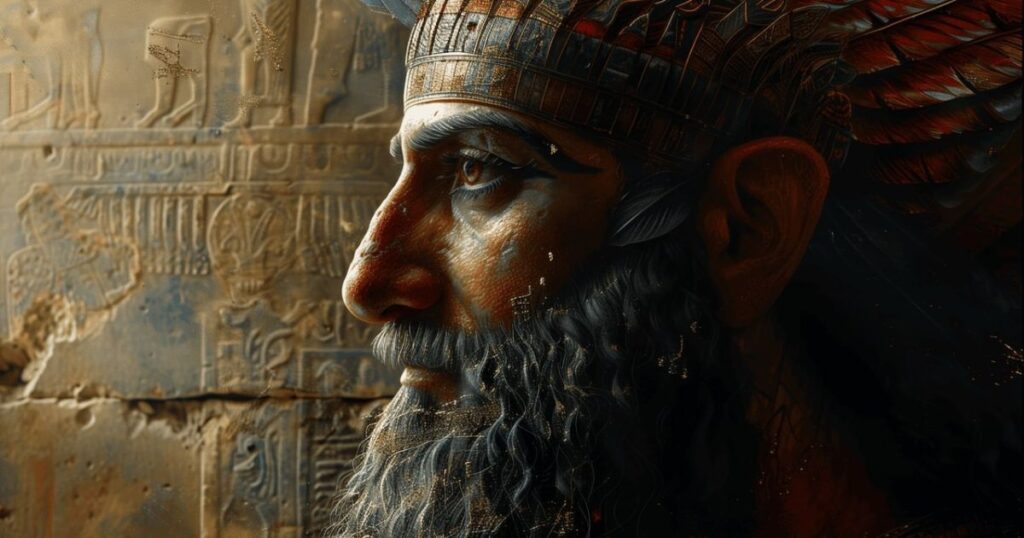Imagine walking through the dusty streets of ancient cities in the Middle East. Here, human civilization first emerged. The Fertile Crescent is more than a place—it’s the heart of human innovation and culture.
Your journey will uncover amazing stories of human strength, creativity, and complex societies. These sites show how our ancestors changed from nomads to city builders.
From Mesopotamian cities to trade networks, the Middle East’s ancient cities were our first big urban tries. Each stone and artifact opens a window into our incredible ability to adapt and grow.
Table of Contents
Key Takeaways
- The Middle East is considered the birthplace of human civilization
- Ancient urban centers emerged in the Fertile Crescent
- Archaeological discoveries continuously reshape our understanding of early human societies
- Urban development began with complex agricultural practices
- Cultural exchange was key in early civilizational growth
The Fertile Crescent: Cradle of Ancient Middle Eastern Civilizations
The Fertile Crescent is a special area that changed human history. It covers parts of Iraq, Syria, Lebanon, Jordan, and Egypt today. Here, some of the biggest steps in farming and culture began.
In the heart of Mesopotamia, the Fertile Crescent was perfect for early farming. Its unique land helped people start new ways of living.
Understanding the Geographic Significance
The Fertile Crescent’s location is key. It had many benefits:
- Rich soil that grew crops well
- Close to rivers for water
- A good climate for many crops
- Safe from outside dangers
Climate and Agricultural Revolution
The Sumerians, who lived here, made big changes in farming. They used rivers to water their fields, making land fertile.
Major River Systems and Their Impact
The Tigris and Euphrates rivers were vital. They gave:
- Water for crops
- Paths for trade
- Boundaries for towns
- Soil that grew better crops
People in the Fertile Crescent learned to live well with their land. This helped them make great advances in farming, cities, and society.
Ancient Cities in the Middle East: A Journey Through Time
Exploring ancient cities in the Middle East is like stepping into a time machine. It shows us humanity’s earliest urban beginnings. These sites tell a story of human civilization, showing how early societies developed complex social structures and new technologies.
The timeline of Middle Eastern cities spans thousands of years. Each civilization built on the achievements of others. You’ll see how these cities became key centers for:
- Trade and economic growth
- Cultural exchange
- Technological innovation
- Religious and political systems
Archaeological sites in the Middle East offer deep insights into human progress. Researchers have found amazing urban planning, advanced irrigation systems, and sophisticated architecture. These discoveries challenge our views of ancient technology.
Key periods of urban growth include:
- Prehistoric settlements (10,000-4,000 BCE)
- Early Bronze Age cities (3,300-2,100 BCE)
- Classical urban centers (2,100-500 BCE)
- Imperial metropolitan areas (500 BCE-500 CE)
Each site has its own story of human adaptation, resilience, and creativity. From the earliest mud-brick structures to complex cities, these places mark important milestones in our shared human journey.
Mesopotamian Marvels: Ur and Uruk
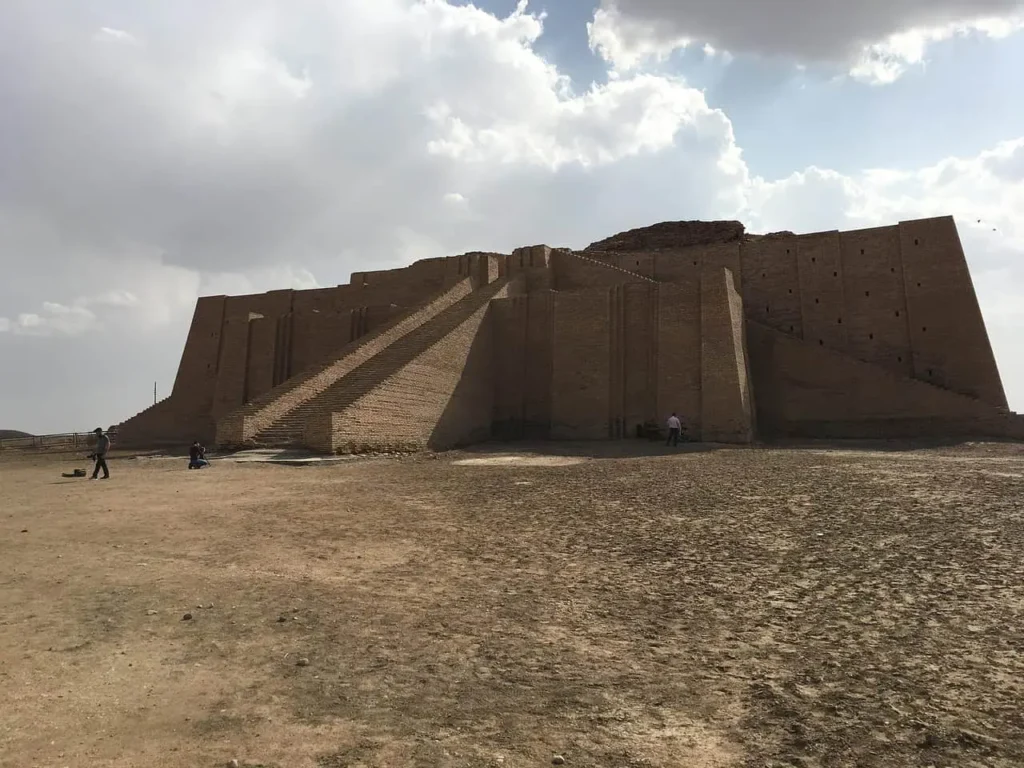
The ancient cities of Mesopotamia were key milestones in human history. Ur and Uruk show how early cities developed. They were centers of culture and innovation.
The Great Ziggurat of Ur
The Great Ziggurat of Ur was a marvel in ancient Mesopotamia. It was a huge stepped temple that showed the city’s connection to gods. Made of mud bricks, it stood tall over the landscape.
- Built around 2100 BCE
- Dedicated to the moon god Nanna
- Stood approximately 30 meters high
- Served as a central religious complex
Uruk’s Cultural Achievement
Uruk was a groundbreaking city for culture. It was famous for cuneiform writing, a major breakthrough in communication. Archaeologists have found thousands of clay tablets that tell us about Mesopotamian society.
Daily Life in Ancient Mesopotamian Cities
Life in Ur and Uruk was complex. People worked in different jobs, from farming to crafting. Cuneiform writing helped keep records, supporting the economy and government.
- Organized social hierarchies
- Specialized labor divisions
- Advanced agricultural techniques
- Robust trade networks
Babylon: The Jewel of Ancient Mesopotamia
Babylon was a key city in the ancient Near East. It showed the babylonian civilization’s amazing achievements. This city grew from a small place to a major center that changed history.
The city’s famous landmarks amazed people everywhere. Among these were:
- The magnificent Hanging Gardens
- The stunning Ishtar Gate
- Intricate architectural marvels that showed advanced urban planning
Babylon’s scientists and mathematicians made big steps forward. They worked on astronomy and created an early writing system. Their math skills included complex algebra that helped later civilizations.
At its best, Babylon was more than a city. It was a cultural leader that:
- Set up complex legal systems
- Developed advanced farming methods
- Created detailed trade networks across the ancient Near East
Today, we can see Babylon’s influence in our laws and math. Its legacy keeps historians and archaeologists interested in its rich culture.
The Rise of Nineveh: Capital of the Assyrian Empire
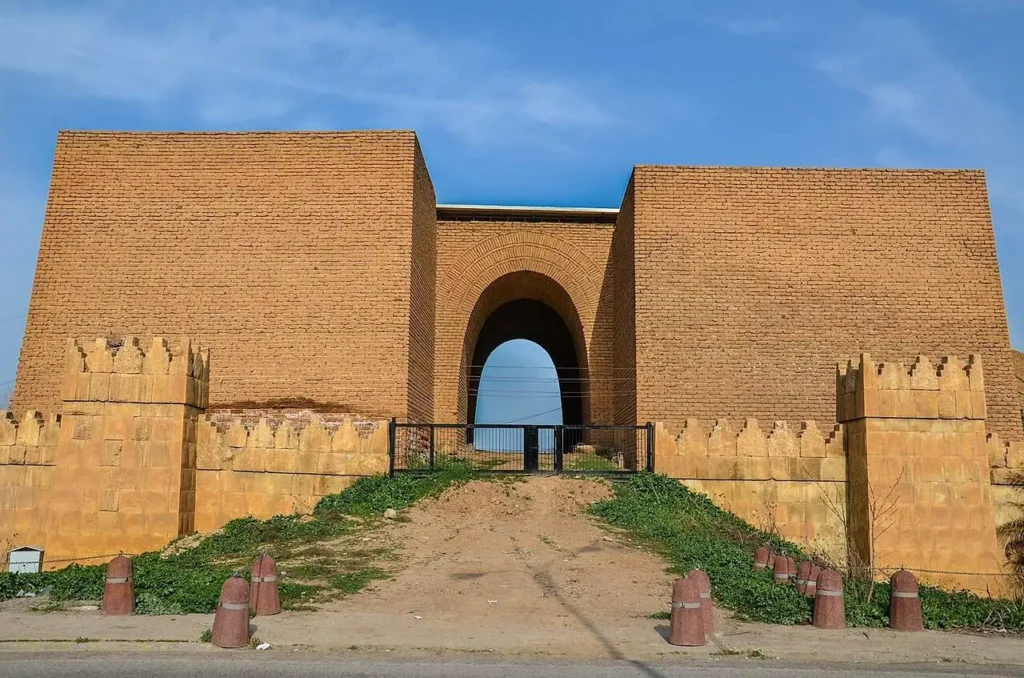
Nineveh was a key city in the ancient Middle East, sitting by the Tigris River. It was the capital of the Assyrian Empire. This city was a symbol of power and culture during its peak.
Palace Architecture and Military Might
The palaces in Nineveh showed the Assyrian empire’s strength. They were huge and had many rooms. These included:
- Intricate stone relief carvings of military victories
- Large throne rooms showing the king’s power
- Strong walls and fortifications
The Great Library of Ashurbanipal
The library of King Ashurbanipal was at the center of Nineveh’s learning. It was the world’s first great library. It had thousands of clay tablets with:
- Scientific texts
- Historical records
- Books from all over the ancient world
Defensive Innovations and City Planning
The Assyrian Empire was known for its defense. Nineveh’s city planners created smart ways to keep the city safe. They built:
- Strong, layered walls
- Smart water systems
- Well-planned streets
These ideas made Nineveh a top city in the Middle East. It showed the Assyrian Empire’s advanced technology and military skills.
Persepolis: The Ceremonial Capital of Ancient Persia
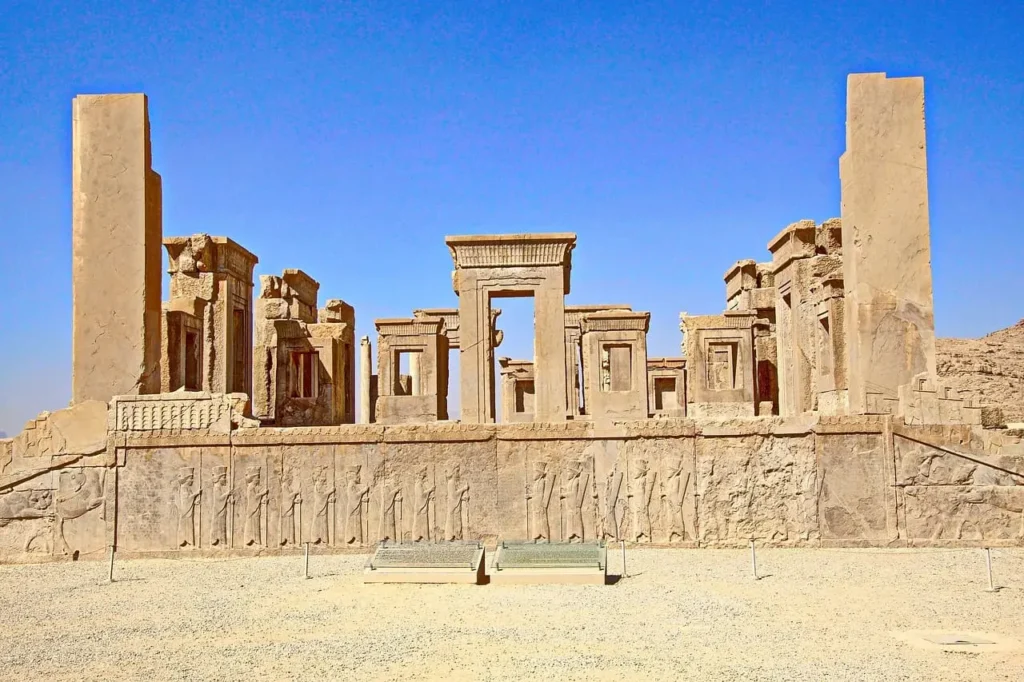
Persepolis is in the heart of the ancient near east. It shows the Persian Empire’s greatness. Founded by Darius I around 518 BCE, it was the peak of Persian culture and architecture.
The city’s design is complex and full of art. Visitors see amazing stone reliefs on big columns and walls. These carvings show:
- Elaborate ceremonial scenes
- Royal processions
- Representatives from different cultural groups within the empire
Persepolis’s architecture shows the Persian Empire’s diversity. The Apadana Palace is a huge example. It had massive halls and showed the city’s role as a diplomatic center. Artists from all over the ancient near east worked together, mixing styles.
But, Persepolis’s glory was short-lived. Alexander the Great conquered and burned it in 330 BCE. Now, it’s a key archaeological site. It gives deep insights into ancient Persian life.
Mari: The Hidden Gem of the Euphrates
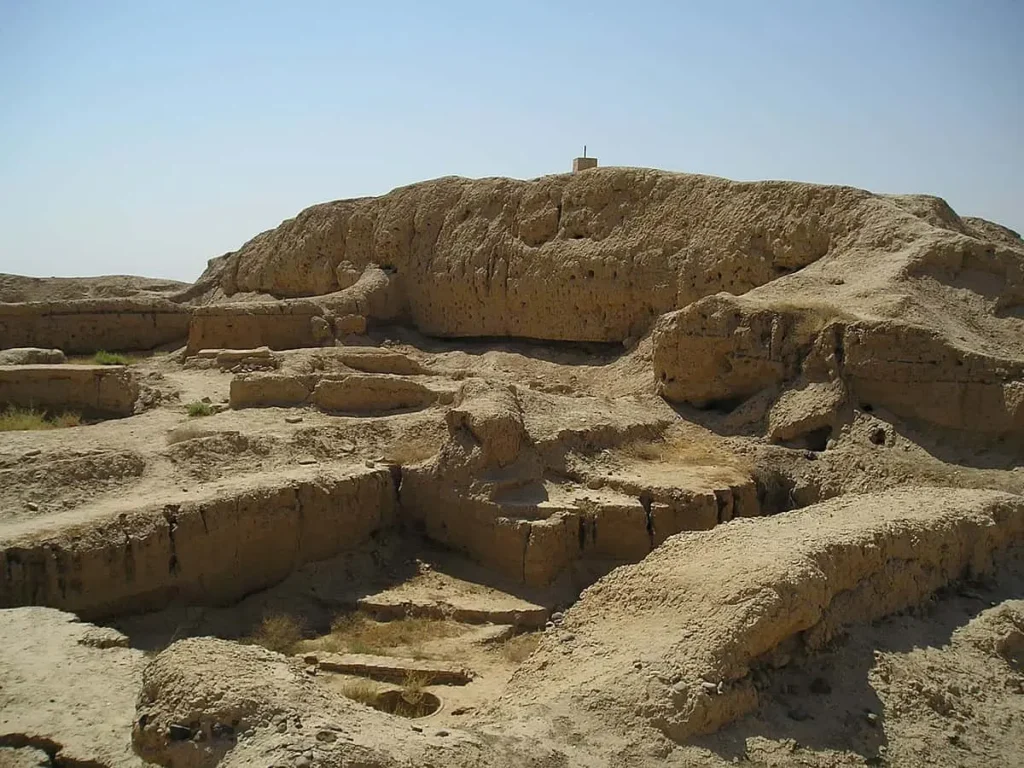
Mari is a hidden treasure by the Euphrates River. It gives us a peek into ancient Mesopotamian life. This city shows us the social and cultural sides of one of the earliest cities.
Archaeological Discoveries at Mari
Excavations at Mari have found many amazing things. The biggest finds are:
- An extensive royal palace complex spanning over 6 acres
- Intricate mud-brick architecture
- Thousands of cuneiform tablets documenting daily life
Trade Networks and Diplomatic Relations
Mari was a key spot in Mesopotamian trade. It had deep diplomatic ties with other kingdoms. Its location made it a vital place for:
- Regional commerce
- Cultural exchange
- Political negotiations
Royal Archives and Cultural Exchange
The royal archives at Mari are a extraordinary window into the past. They show us how ancient societies worked and communicated. These clay tablets tell us about diplomacy, trade, and social life in Mesopotamia.
Exploring Mari helps us understand ancient societies better. We see how they built complex social systems and kept ties across big areas.
Palmyra: The Desert Queen of Syria
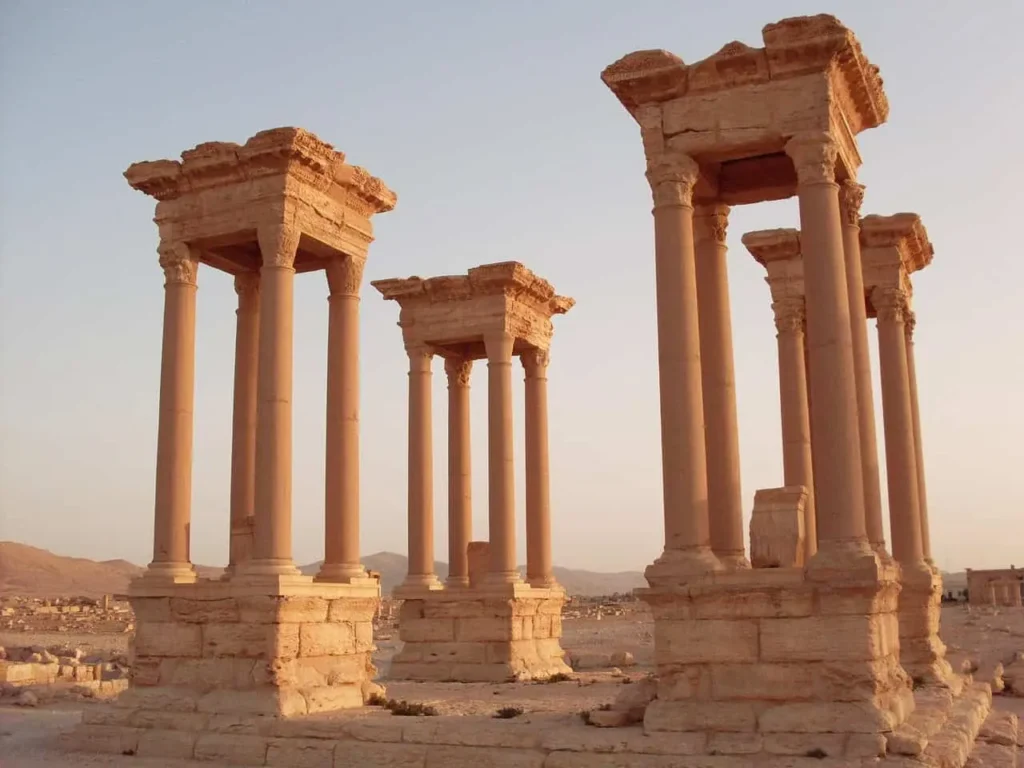
Palmyra is in the Syrian desert, a stunning example of ancient history. It was a key trading center, connecting cultures and empires in the ancient Near East.
The city’s architecture is a mix of Roman and Syrian styles. Its location made it a major trade hub, linking far-off civilizations through its wide networks.
- Unique architectural fusion of Roman and Middle Eastern styles
- Critical trading center in the ancient Near East
- Remarkable cultural and economic significance
Queen Zenobia made Palmyra a strong kingdom in the 3rd century. Her leadership challenged Rome and grew the city’s influence. The Temple of Bel and the Great Colonnade show the city’s art and culture.
Now, Palmyra needs help to be saved. UNESCO World Heritage efforts work to protect it. They want to keep this amazing site for future explorers.
Even with recent troubles, Palmyra shows strength, diversity, and human success in the ancient Near East.
Preserving Ancient Middle Eastern Heritage Today
Keeping ancient sites in the Middle East safe is a big job for historians and experts. These sites face many dangers that could harm them. So, saving them is more urgent than ever.
Conservation Challenges
Protecting these sites is hard because of many challenges. Some of the main ones are:
- Environmental damage from climate change
- Political troubles in the area
- People digging up sites without permission
- Not enough money for saving these places
Modern Archaeological Techniques
New ways have been found to study and save ancient cities. Thanks to technology, we can learn more about these sites than ever before:
- Satellite imaging for detailed maps
- Non-invasive radar for underground views
- 3D scanning and photogrammetry for detailed models
- Studying materials with molecular analysis
Digital Preservation Methods
New digital tools are changing how we look at and save sites. Virtual tours let people see ancient cities safely. This way, we can enjoy these places without risking them.
Teams from around the world are working together. They’re finding new ways to keep these sites safe. This means future generations can also learn from and enjoy them.
Archaeological Discoveries Reshaping Our Understanding
Recent finds in the ancient Near East have changed how we see early human societies. New research brings to light insights that question old stories.
New tools have made digging up the past easier. Ground-penetrating radar and satellite images let researchers peek into sites without digging. These tools help:
- Map hidden urban structures
- Identify where to dig next
- Keep fragile sites safe
Genetic studies and advanced dating have given us a new view of ancient migrations and cultural mix-ups. Now, we can follow how people and cultures moved and met more accurately.
With digital tools, scientists can build 3D models of old cities. These models let everyone see the details of ancient places that were once hidden.
Big finds have shown us how advanced early cities were. Unexpected artifacts show off their metalwork, trade, and building skills. These discoveries show us that ancient societies were more advanced than we thought.
- Sophisticated astronomical calculations
- Advanced mathematical systems
- Complex water management technologies
As we keep improving our digging methods, our view of history gets clearer and more detailed. Every new find changes how we see the early civilizations of the ancient Near East.
Conclusion
Your journey through ancient Middle Eastern cities shows us a deep history of human success. These cities are not just old ruins; they are keys to understanding our earliest times. From Ur’s ziggurats to Babylon’s palaces, every stone and artifact shares stories of creativity, culture, and strength.
The Babylonians were known for their advanced urban planning and culture. You’ve seen how these cities were more than just buildings. They were complex societies that helped shape our modern world. Their trade networks, architecture, and social systems challenge our views of early human life.
It’s vital to keep these ancient sites safe to learn from our past. Each find gives us new insights into human creativity, social life, and technology. By exploring these cities, we understand how societies grew, changed, and succeeded in tough times.
As we get better at digging up the past, we’ll learn even more about these amazing places. The ancient cities of the Middle East show us the power of human spirit. They remind us that civilization is a never-ending journey of learning and achievement.
FAQ
What is the Fertile Crescent, and why is it significant?
The Fertile Crescent is a region in the Middle East. It includes parts of Iraq, Syria, Lebanon, Israel, Palestine, Jordan, Egypt, and Turkey. It’s called the cradle of civilization because of its fertile land and rivers.
This land was key in creating advanced farming, complex societies, and early cities. The Sumerians and Babylonians thrived here.
What are some of the most important ancient cities in Mesopotamia?
Important cities in Mesopotamia include Ur, Uruk, Babylon, and Nineveh. Ur was famous for its ziggurat. Uruk is known for cuneiform writing.
Babylon was known for its Hanging Gardens and culture. Nineveh was the capital of the Assyrian Empire, famous for its library and architecture.
How did ancient Middle Eastern cities develop writing systems?
The Sumerians in Mesopotamia created cuneiform, one of the earliest writing systems. They used reed styluses on clay tablets. This script was for economic transactions, religious texts, and history.
Writing was a big step forward. It allowed for better record-keeping and communication.
What challenges do archaeologists face when studying ancient Middle Eastern cities?
Archaeologists face many challenges. These include political instability, environmental damage, looting, and funding issues. Sites are often in conflict zones, making research hard.
Preserving sites is also tough. Climate, urban development, and the fragile nature of ancient structures make it challenging.
What was the importance of trade in ancient Middle Eastern cities?
Trade was vital in cities like Mari and Palmyra. These cities were on trade routes. They exchanged goods, ideas, and cultures.
They were major economic centers. They connected civilizations over long distances.
How did religion influence urban development in ancient Middle Eastern cities?
Religion was key in urban planning and society. Cities had massive temple complexes, like Mesopotamia’s ziggurats. These were spiritual centers and played economic and administrative roles.
Religion and urban development were deeply connected.
What modern technologies are helping to preserve ancient Middle Eastern archaeological sites?
Modern methods include 3D mapping, digital reconstruction, and satellite imagery. Ground-penetrating radar and advanced conservation are also used. Digital tech helps create virtual models, document artifacts, and study sites safely.
Why are the ancient cities of the Middle East considered so important to world history?
These cities are where civilization began. They saw the rise of complex societies, advanced farming, writing, and urban planning. They offer insights into human evolution and the foundations of modern society.
